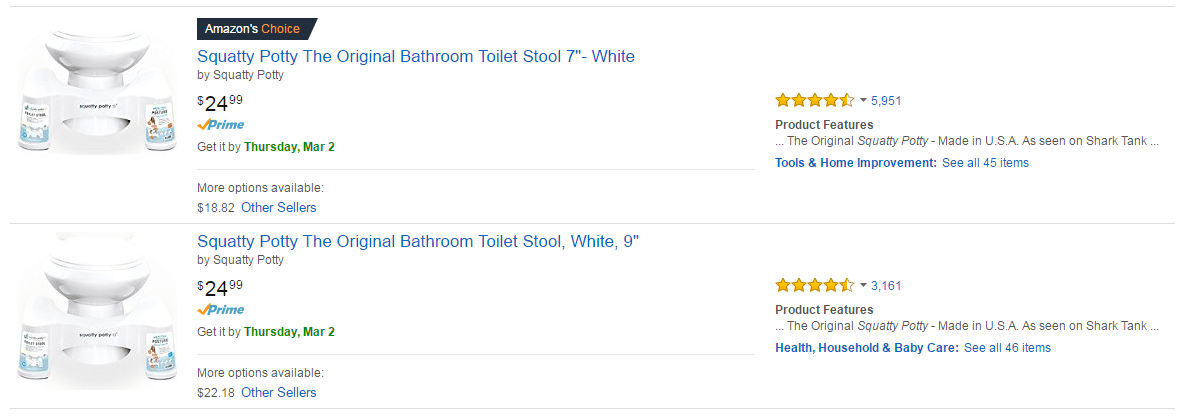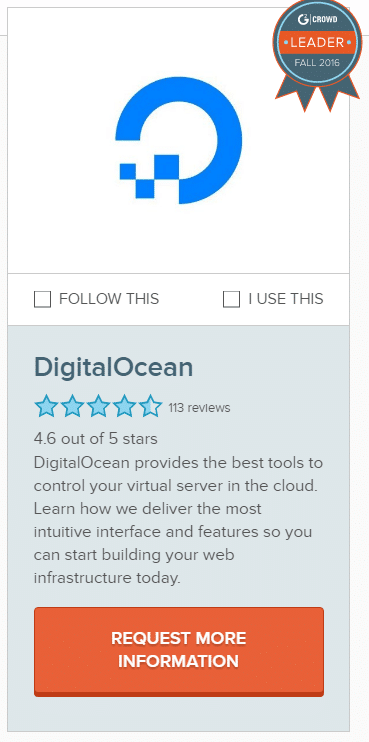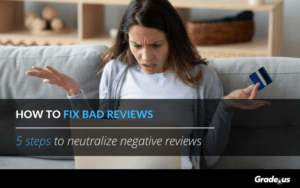“You just got told b*tch … welcome to the real internet.”
It’s 2011. Paul Christoforo, owner of Ocean Marketing is handling customer service for his client N-control. They’re the makers of the popular Avenger controller accessory, an add-on that improves gaming speed.

N-control promised to deliver their products to customers by Christmas.
Only they couldn’t.
Dave, an Avenger customer, was naturally upset. He reached out to the company for an eta on his order. He got a healthy dose of vitriol instead.
Christoforo’s outburst went viral
The story spiraled out of control as Christoforo clashed with Kotaku, Engadget, IGN, PAX and other huge gaming brands.
He continued to make things worse.
December 27, 2011.@OceanMarketting Please refrain from referring to me or IGN as support for you, your company or your clients. You do not have it.Scott Lowe (@ScottLowe)
Christoforo was publicly humiliated. His company eventually went out of business as his remaining clients fled.
But N-Control paid the price.
Internet mobs attacked Christoforo’s client
Eli Schwartz, N-Control’s new marketing manager, spent the entire day trying to do damage control.
“So far the Amazon rating on the Avenger has gone from 4 and 1/2 to 1 star in around 8 hours. None of the reviews are true, they all just appeared today out of pure hate trolling.”
The damage was swift.
N-Control was finished, the reviews would bury their product permanently, right?
Wrong.
Amazon eventually removed the negative reviews associated with this PR disaster and customers continued to buy.
The negative review blast didn’t have…
… Staying power.
This story exposes a crucial point about online review blasts. Most of the time, they don’t have the staying power they need to make a long term impact.
Which usually means one of three things will happen. The reviews will be…
1. Discounted by publishers. N-Control explained their situation, showing they had taken steps to rectify their problem. They were able to get the vast majority of hate reviews taken down.
2. Discounted by customers. Customers are savvy shoppers. These days, they’re smart enough to spot a review blitz when they see it. Their skepticism grows regardless of whether the reviews are overwhelmingly positive or negative.
3. Viewed as unbelievable. Customers are naturally risk averse. Research shows customers are far more focused on avoiding pain than looking for any positive benefits. Online review blasts are often viewed as unbelievable, leading customers to ignore them (and the product) completely.
These factors make review blasts a risky proposition. What about the review blasts that actually work?
Let’s look at four products to answer that question.
The Squatty Potty has tens of thousands of reviews, across multiple products on Amazon and other sites.

What’s interesting about these reviews is the fact that many of them appeared around the same time. It certainly looks like a review blast and it’s worked very, very well for them.
Digital Ocean created cloud hosting for developers. Their service focuses on making it simple and easy for developers to publish their apps.

They’ve received an incredible amount of reviews, good will and publicity in the industry, quickly becoming a contender in cloud hosting.
PooPourri is a hilarious yet remarkably effective fragrance that hides the smell of poo. It’s especially popular with women, the brand’s target audience.

They have tens of thousands of reviews. A large chunk of their reviews appeared at around the same time, just like the Squatty Potty.
Dollar Shave Club runs a well known subscription service. They took the shaving world by storm, stealing market share from bigger more established competitors like Gillette.

What’s amazing about their service is the fact that they have 30,700+ reviews. 98 percent of their customers would recommend Dollar Shave Club to a friend.
These are the success stories. They show that an online review blast can work, if it’s handled properly, right?
Wrong.
These success stories actually make a case for a slow, steady methodical approach to reviews.
Here’s why.
They used a triggering event to drive sales
Each of the businesses, products or services I’ve shared had a positive triggering event. A unique situation that generated an intense amount of curiosity, attention and goodwill.
Dollar Shave Club went viral after they published a clever ad highlighting their service.
Squatty Potty uses the same exact strategy…
And PooPourri…
And Digital Ocean…
Starting to see a theme?
Each of these brands received an overwhelmingly positive surge of reviews. Those reviews were triggered by great marketing.
Groundbreaking, I know.
But my point here is this. Customers and publishers are smart enough to recognize a triggering event that’s genuine vs. one that’s negative or artificial.
Are online review blasts fake?
Are review blasts centered around something negative or artificial? The vast majority of these artificial campaigns tend to backfire because they’re wrong from the start.
They’re dangerous because they…
- Aren’t based on merit. It’s common for marketers to bribe or pay customers for their review. These reviews aren’t authentic and customers know it.
- Rely on begging. Asking isn’t the same thing as begging. Asking for a review is something equals do. Begging for a review is something a needy business does, inducing pity, disgust and contempt in the customer. Where do those feelings end up? That’s right, in the reviews they write.
- Violate social norms.Most of us are trained to be, “nice.” It’s socially inappropriate to bully, ambush or coerce people into doing what we want. Artificial review blasts violate this social norm, creating unnecessary blowback.
Best case scenario, artificial review blasts are ignored. Worst case scenario there’s a considerable amount of fall out and negativity – whether that’s due to negative PR, bad reviews, angry customers or all of the above.
Truth is, you need bad reviews
Bad reviews give you the much needed info you need to improve your product or service. But it’s also a wonderful opportunity for customers.
It’s a teaching moment that shows customers…
- Your product is credible – as we can’t please everyone
- Whether your product is right for them
- How you’ll handle their crisis or emergency
- The strength and weakness of your product or service
- What you’re doing to make things better
Here’s the problem.
Using bad reviews to teach customers only works when the positive reviews outnumber the negative ones.
A steady stream of positive reviews does what an online blast can’t. It consistently counteracts the damage from a negative review.
- Recent reviews can counteract older reviews
- A positive review can defuse the objections of a negative review
- A positive review can alert customers to changes or fixes that were mentioned in bad reviews
- Positive reviews continually show customers are happy with what you provide
The key here is consistency.
When you’re consistent you avoid activity spikes and the silence that comes afterwards.
A steady stream of reviews tells customers you’re engaged and involved. That you’re willing to take the feedback you receive to make things better, for them.
Here’s the key to consistent reviews
Asking.
That may not be a revelation, as you’re probably aware of the benefits that come with asking for reviews. Here’s the key differentiator though.
How you ask matters.
Are you asking from a needy place where you hope and pray customers will agree to share their experience with others? Or are you approaching this from a place of confidence, that you know customers will be excited to share their experience?
Here’s why it matters.
The way you approach customers for a review impacts the kind of review you’ll get. Simply asking for the review works, but it’s viewed as an inconvenience.
Hi Steve, we’d love it if you could write a review about your experience. Share your thoughts here.
vs.
Hi Jan! We’re reaching out to the top 3% of our customers to learn how we can be better. Would you be willing to chat for 3 to 5 minutes about your experience with us?
See the difference?
Ask for a review from the right mindset and customers respond differently.
What about product launches and new services?
Sometimes a review blast is necessary
A new product or service depends on product reviews to get off the ground, right? Gaining traction is tough when you don’t have any product or service reviews.
It’s true.
But these initial reviews are still dependent on genuine activity.
Reviews for an upcoming book are still dependent on a group of bloggers, reviewers and key influencers. Launching a new service depends on pilot customers who are willing to vouch for your product’s effectiveness.
But it’s still based on something genuine.
Yet, a review blast isn’t fraudulent by definition. It’s fraudulent when reviews are gained by bribing, begging or manipulating people. You already know that.
Google, Yelp, TripAdvisor and every other review site tell us the same things.
They warn us against “fake reviews.”
Wait a minute.
Any review can be fraudulent.
It doesn’t matter whether the reviews trickle in or come in as a review blast. Right is right and wrong is wrong.
It’s true.
But there’s far less incentive for businesses to focus on a few one-off reviews. There’s less value in focusing on one or two reviews at a time.
You know it, I know it.
The fraudulent email blast is where it’s at… if you’re dishonest. Here’s the good news. Customers have developed a pretty sophisticated BS filter. When a review doesn’t smell right, they know.
A negative outburst threatened to bury N-Control
Paul Christoforo created a PR nightmare for N-Control. Their situation went from bad to worse, and then surprisingly, things got better.
Publishers removed their fraudulent reviews.
N-control won their customers back. Slowly but surely they used a steady stream of positive reviews to counteract the damage. They took their negative reviews and used them to grow.
You can too.
Focus your time and attention on the slow and steady reviews. As we’ve seen, online review blasts lack staying power. They can’t measure up against consistency and reliability.
When you focus, your reviews receive the credibility, trust and authority they deserve. Your customers see you as the amazing provider you are. And the best part?
You’ll find your reviews have amazing staying power, without the vitriol, guaranteed.
About the Author
Andrew McDermott
Andrew McDermott is the co-founder of HooktoWin. He shows entrepreneurs how to attract and win new customers.










